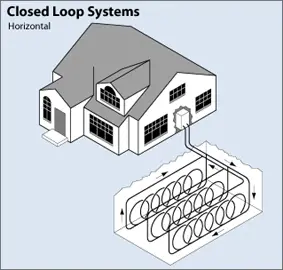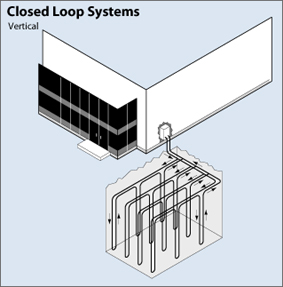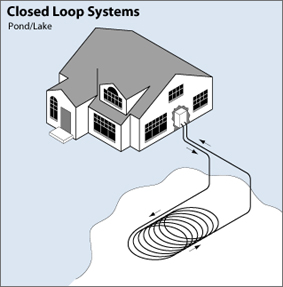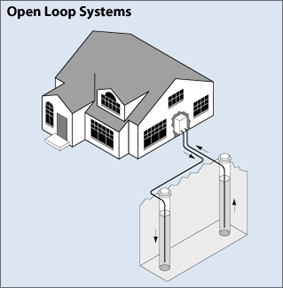Are Electricity Prices On The Rise?
You Bet…
Find Out How To Save Thousands Over The Years By Retro-Fitting or Installing A Ground Source Heat Pump
A ground source heat pump (GSHP), also known as a geothermal exchange heat pump, is a heat pump that uses the Earth as either a heat source,when operating in heating mode, or a heat sink, when operating in cooling mode.
Efficiencies of Ground Source Heat Pump
The ground source heat pump is one of the most efficient residential heating and cooling systems available today, with operating efficiencies much higher than other heating systems and cooling systems. This means it directly translates into savings for you on your utility bills.
How Does a Ground Source Heat Pump Work?
The temperature of the ground a few feet beneath the Earth’s surface remains relatively constant throughout the year, even though the ambient air temperature fluctuates with seasonal changes. The ground temperature is surprisingly constant, and even at shallow depths of about 2 metres (6.5 feet), the temperature of the ground in much of the world remains pretty constant between 7 C (45 F) and 21 C (70 F). This is the reason why water drawn from below ground from wells, feels cool even on a hot summer day.
So in winter for example, heat is captured from the ground which is warmer than from the chilly air around your home. Conversely, in summer, the relatively cool ground absorbs a home’s waste heat more readily than the hot outdoor air.
As with any heat pump, geothermal and water-source heat pumps are able to heat, cool, and, if so equipped, supply the house with hot water. Some models of geothermal systems are available with two-speed compressors and variable fans for more comfort and energy savings. Relative to air-source heat pumps, they are quieter, last longer, need little maintenance, and do not depend on the temperature of the outside air.
Types of Ground Source Heat Pump Systems
There are four basic types of ground loop systems. Three of these: horizontal, vertical, and pond/lake, are all closed-loop systems. The fourth type of system is the open loop option. Which one of these is best depends on the climate, soil conditions, available land, and local installation costs at the site. All of these approaches can be used for residential and commercial building applications.
 Closed Loop Systems
Closed Loop Systems
Horizontal
This type of installation is generally most cost-effective for residential installations, particularly for new construction where sufficient land is available. It requires trenches at least four feet deep. The most common layouts either use two pipes, one buried at six feet, and the other at four feet, or two pipes placed side-by-side at five feet in the ground in a two-foot wide trench. The Slinky™ method of looping pipe allows more pipe in a shorter trench, which cuts down on installation costs and makes horizontal installation possible in areas it would not be with conventional horizontal applications.
Vertical
Large commercial buildings and schools often use vertical systems because the land area required for horizontal loops would be prohibitive. Vertical loops are also used where the soil is too shallow for trenching, and they minimize the disturbance to existing landscaping. For a vertical system, holes (approximately four inches in diameter) are drilled about 20 feet apart and 100–400 feet deep. Into these holes go two pipes that are connected at the bottom with a U-bend to form a loop. The vertical loops are connected with horizontal pipe (i.e., manifold), placed in trenches, and connected to the heat pump in the building.
Pond/Lake
If the site has an adequate water body, this may be the lowest cost option. A supply line pipe is run underground from the building to the water and coiled into circles at least eight feet under the surface to prevent freezing. The coils should only be placed in a water source that meets minimum volume, depth, and quality criteria.
Open-Loop System
 This type of system uses well or surface body water as the heat exchange fluid that circulates directly through the ground source heat pump system. Once it has circulated through the system, the water returns to the ground through the well, a recharge well, or surface discharge. This option is obviously practical only where there is an adequate supply of relatively clean water, and all local codes and regulations regarding groundwater discharge are met.
This type of system uses well or surface body water as the heat exchange fluid that circulates directly through the ground source heat pump system. Once it has circulated through the system, the water returns to the ground through the well, a recharge well, or surface discharge. This option is obviously practical only where there is an adequate supply of relatively clean water, and all local codes and regulations regarding groundwater discharge are met.
